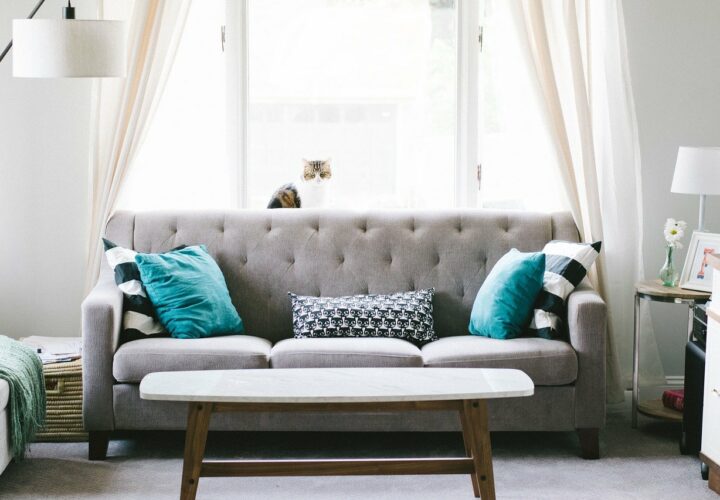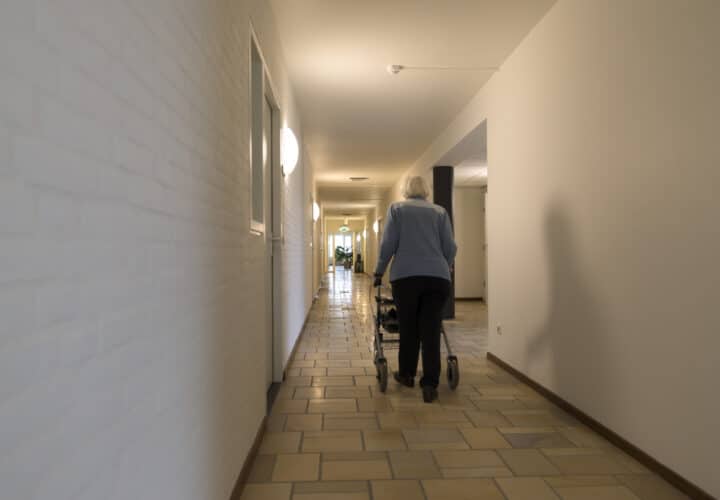A study conducted in 2018 by AARP found that 76 percent of US residents over the age of 50 would choose to live in their homes indefinitely as they get older. Here is a rundown of some of the home modifications that can help older adults remain independent in their own homes.
Older adults’ desire to remain in their own home as they get older is growing, according to two separate studies by AARP and Home Advisor. While we can all sympathize with people’s wish to remain in familiar surroundings and keep connections to their local community, a qualitative study run in 2021 by Salus University found that the ability to get around their home safely and reliably was the largest barrier to aging in place. Research by the American Geriatrics Society further suggests that personal safety in the home can be particularly hard to manage for people with dementia.
Risk of falling, and difficulty getting around your house can be reduced through a combination of modifications to certain features of a home, small remodeling projects, and the use of smart technology. This can both prolong the amount of time that someone can live independently of in-home care, and make caregivers jobs easier when assistance is required.
Here are some of the most commonly required home modifications for people aging in place.
Improving bathroom safety and accessibility
For older adults living with dementia or mobility difficulties, bathrooms can pose both a large fall risk and an accessibility issue.
There are three key modifications that you can make to a bathroom to improve its safety and accessibility. These are:
- Installation of a walk-in tub or shower: Standard tub showers can be challenging to climb in and out of if you have reduced mobility in your hips or knees, poor balance, or visual impairments. Converting a tub shower into a walk-in shower can mitigate these risks, and also make further modifications such as the addition of a shower chair or handrails easier to install.
- Adding slip resistance to flooring: Ceramic or porcelain tiles have the double hazard of being both slippery when wet and offering nothing in the way of padding if someone were to fall on them. The best way to make bathroom floors slip resistant is to replace tiles with either vinyl or (less commonly used) rubber flooring. A more affordable solution is to add anti-slip strips to existing flooring, however these strips are generally transparent and can, over time, peel off unnoticed. They should therefore be checked at least once every 6 months.
- Installing handrails: It’s worth adding hand-rails around the entire circumference of the bathroom, including in the shower as this can both help with accessibility and reduce the risk of falling.
Adding a smart lighting system
Difficulty in finding light switches, and therefore being able to adequately light your home, can both increase the risk of falling and make daily tasks around the house more difficult.
There are a few inexpensive solutions to help signpost light switches, including painting the switches themselves a contrasting color to the wall or labelling them with a large sticker. However, for parts of the home that represent a larger safety hazard, such as stairs, kitchens or bathrooms, you may want to consider adding automatic light sensors so that lights will always come on when someone enters these parts of the home
When it comes to adding an automatic lighting system to a home, you either have the option of replacing existing lights with lights that have built-in motion sensors, or you can add external motion sensors to existing lights. In terms of making a home as safe as possible, we would recommend the latter option, as this allows you to choose exactly where motion detectors are placed and therefore at what part of the house lights are triggered on or off.
It’s best to add these motion sensors to doorways, so lights come on and turn off as soon as someone enters and leaves a specific room. Motion sensors work best when they are installed into a wall that runs parallel, rather than perpendicular, to the direction where someone is walking. Someone should have to walk past the sensor in order to enter a room, rather than walking towards the sensor when walking into a room.
Flattening out external steps
Given the importance of social interaction in preventing cognitive decline in people with dementia, making a home accessible from the outside is vital to facilitate aging in place.
Even a small half-step down from the front door to the front yard can make a home significantly more difficult to enter and exit. This both increases the risk of falling and can discourage people from leaving their home.
Ramps can make steps and thresholds more accessible. There are three types of ramps to choose from depending on your budget and the height of the steps that you want to flatten. These options are:
- Threshold ramps: A threshold ramp is essentially a wedge placed at the edge of a threshold. They are generally made out of aluminum or rubber and are held down by their own weight rather than being fitted permanently. They are suitable for thresholds with a height of less than six inches.
- Portable ramps: Portable ramps are similar to threshold ramps, but rather than being placed flush the top of a step, portable ramps are placed over a step(s). Portable ramps are available in lengths of up to 10 feet, meaning that they can be used to flatten out steps of a maximum height of 10 inches.
- Modular ramps: Modular ramps are permanently installed ramps. They are necessary to safely flatten out steps with a height of over a foot. Wooden panels, aluminum sheets and concrete are the three most commonly used materials for the “flooring” of these ramps.
Some important safety features of modular ramps include:
- Maximum incline: Ramps should not not have an incline steeper than a 1:12. For every inch of height you want to flatten for the steps, you need a foot of ramp length. This means that you may have to install a winding ramp if there are several steps leading up to a front door.
- Minimum Width: For someone who walks with a walking aid or uses a wheelchair, ramps need to have a minimum width of 32 inches to accommodate them. Widths in excess of 36 inches are recommended.
- Edge protection: Either side of a ramp should have raised curbs of at least two inches of height. Rails should also be installed and these should be between three and four feet high.
- Slip resistance: The material used to create the floor of the ramp should be textured to prevent slipping. Wooden beams can be ridged and aluminum sheets embossed to make them anti-slip. Concrete should be finished with anti-slip paint and anti-slip strips.
Financial aid for home modifications
Certain home accessibility modifications, such as the installation of ramps or a walk-in shower can cost several thousand dollars. Fortunately, there are a few sources of financial assistance for people who are modifying their home with the specific goal of making them more accessible.
These sources of financial support include:
- State-specific government assistance programs: 27 states offer at least one financial assistance program for accessible home improvement projects. You can find a list of these programs here.
- Rebuilding Together are a non-profit who run volunteer programs where tradespeople work for free on home improvements that support aging in place. You can find a list of local affiliates here.
- There are a large number of charities and organizations that offer financial assistance to veterans, and this usually extends to grants for home modifications. A list of these organizations can be found here.
Volodymyr Barabakh is a writer and home modifications consultant and the co-founder and project director of Fortress Home.



